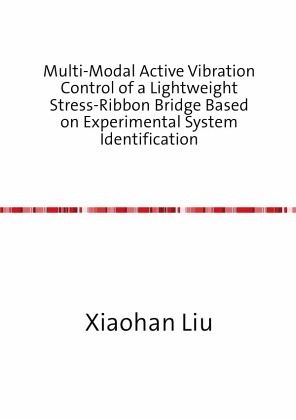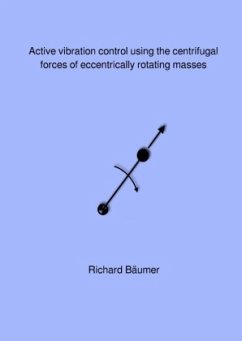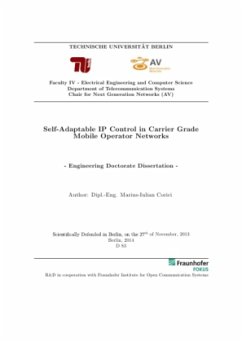
Multi-Modal Active Vibration Control of a Lightweight Stress-Ribbon Bridge Based on Experimental System Identification
Dissertationsschrift
Versandkostenfrei!
Versandfertig in 6-10 Tagen
39,00 €
inkl. MwSt.

PAYBACK Punkte
0 °P sammeln!
Lightweight footbridges are usually elegant and pleasing in terms of their structural design; however, they areprone to high-vibration sensitivity under pedestrian traffic. Multi-modal active vibration control (AVC) techniqueswith sensors and actuators could be potential alternatives to decrease multi-modal vibrations and guarantee thepedestrian comfort. The research object is the stress-ribbon footbridge in the lab at the Chair of Conceptual andStructural Design of Technische Universität Berlin. The extremely low bending stiffness as well as the extremelylow structural damping lead to an unu...
Lightweight footbridges are usually elegant and pleasing in terms of their structural design; however, they areprone to high-vibration sensitivity under pedestrian traffic. Multi-modal active vibration control (AVC) techniqueswith sensors and actuators could be potential alternatives to decrease multi-modal vibrations and guarantee thepedestrian comfort. The research object is the stress-ribbon footbridge in the lab at the Chair of Conceptual andStructural Design of Technische Universität Berlin. The extremely low bending stiffness as well as the extremelylow structural damping lead to an unusually high vibration sensitivity not only in the vertical direction but alsoin the spatial dimension. Additionally, pedestrian-induced vibration on the lightweight footbridge demonstratesmulti-modal time-varying characteristics in both time-frequency analysis (TFA) and experimental modal analysis.A multi-modal AVC system (AVC 2.0) is applied and implemented on the stress-ribbon bridge with inertial sensorsand pneumatic muscle actuators (PMAs) to reduce the multi-modal vibration in vertical and torsional modes.












